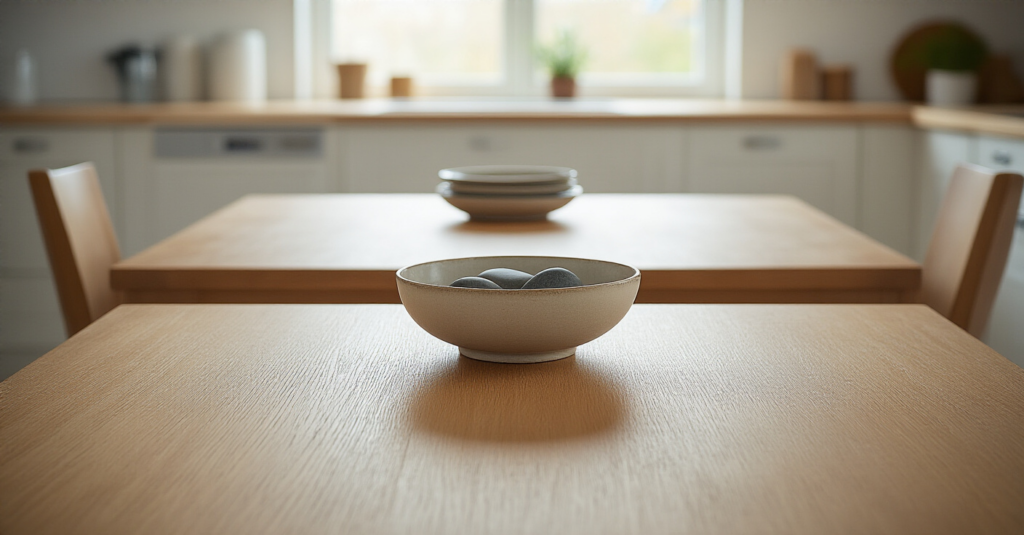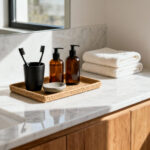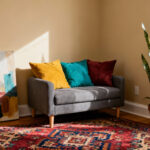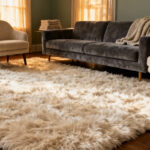Okay, can we have a little heart-to-heart about the kitchen table? You know, that beautiful piece of furniture that’s supposed to be for family dinners and coffee with friends, but has somehow become the official landing strip for mail, keys, stray Legos, and half-finished homework assignments. It’s the busiest, most neglected surface in the entire house, and frankly, it makes me a little sad. Because that table isn’t just wood and legs—it’s the true heartbeat of your home. It’s where the rhythm of your daily life happens.
I’ve been in hundreds of homes as an event planner and stylist, and I’ve seen it all. But I’m here to tell you that transforming this space isn’t about creating a fragile, untouchable museum display. It’s about making it both beautiful and livable. It’s about celebrating the seasons and your family’s unique story. So, let’s clear off the clutter (just for a minute, I promise!) and talk about how to make your kitchen table a place you truly love, all year long.
Laying the Stylish Foundation (Part 1)
Before you even think about buying a single new vase, we need to lay the groundwork. This is the part everyone wants to skip, but I promise you, getting this right is the secret to decor that looks amazing and doesn’t drive you crazy. It’s like building a house—you can’t pick out throw pillows before you have walls.
1. Assess Your Kitchen Table’s Primary Function
This sounds like boring homework, but it’s the most important question you’ll ask: What really happens at this table every day? Is it the command center for art projects and homework, complete with glitter and glue sticks? Is it your WFH office from 9-to-5? Or is it purely for sit-down family meals? Be brutally honest, because a table that needs to stand up to kindergarten-level creativity needs a totally different approach than one reserved for quiet dinners.
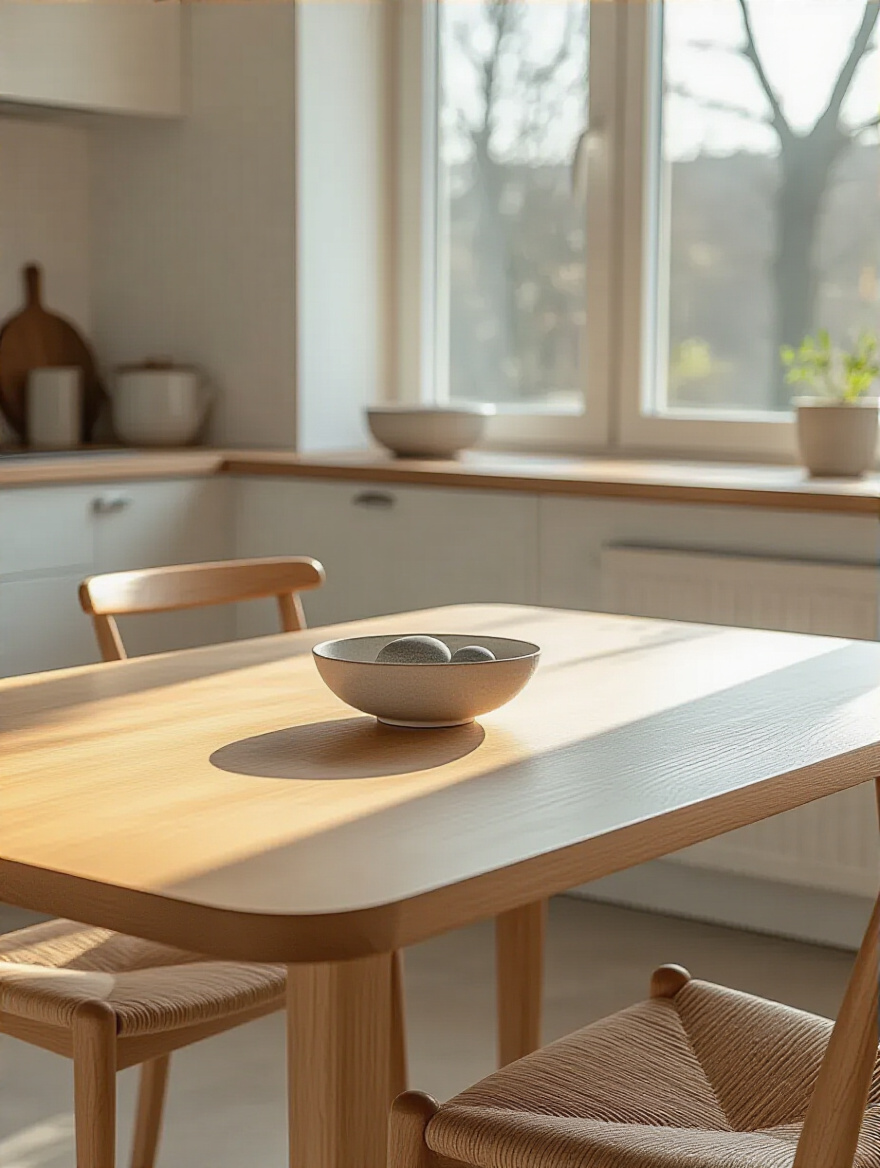
I once worked with a client who bought a stunning, expensive centerpiece with delicate, spiky branches. It looked like it was straight out of a magazine. The problem? Her kids did their homework there every day, and they were constantly getting poked or having to move this giant, fragile thing. We swapped it for a low, wide, and super durable bowl. The kids started using it as a pencil holder, and suddenly, it was not only beautiful but part of their daily routine. That’s the magic—making design work for your real life.
Now that you know what your table does, let’s make sure it looks like it belongs in the room.
2. Harmonize with Your Kitchen’s Existing Decor Style
Your kitchen table doesn’t live on an island (unless it is an island, of course!). It’s part of a bigger picture. The quickest way to make decor feel awkward and out of place is to ignore the style of the room it’s in. If you have a sleek, modern kitchen with flat-panel cabinets, a rustic farmhouse trough filled with cotton stems is going to feel… weird. You want the table to feel like a natural, beautiful extension of the kitchen itself.
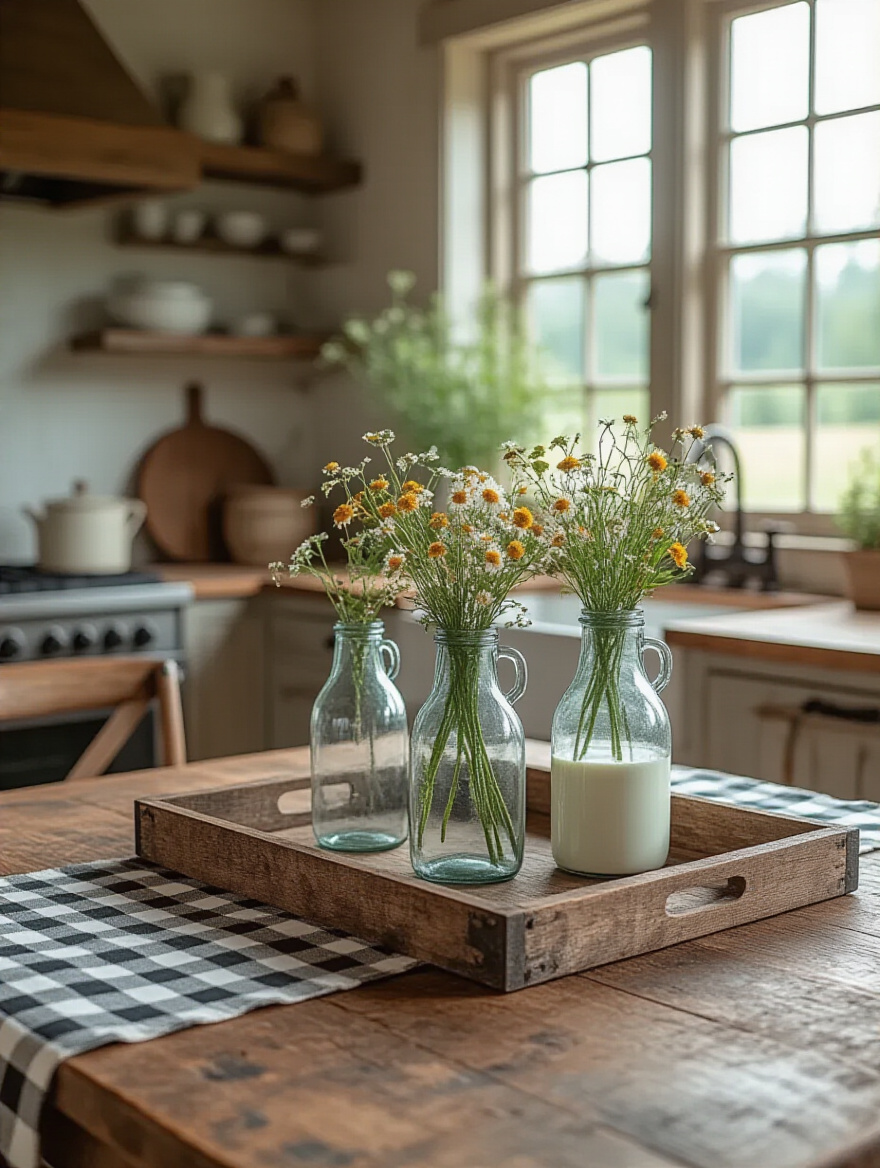
The shortcut? Just borrow from what’s already there. Look at your backsplash, your countertops, your cabinet hardware. Is there a color, texture, or material you can repeat on the table? If you have black hardware, a simple matte black vase or candle holders will instantly tie everything together. If your countertops have a warm veining, a marble fruit bowl can create that cohesive, pulled-together look. You don’t need to match perfectly, just give a little nod to the rest of the room.
Once your decor is speaking the same language as your kitchen, it’s time to decide what it’s going to say.
3. Define Your Preferred Decorative Theme or Palette
“Theme or Palette” sounds so formal, doesn’t it? All this really means is: pick a vibe. What feeling do you want to create? Warm and cozy? Bright and airy? Playful and eclectic? Deciding this ahead of time saves you from buying a bunch of random things you like individually but that look like a chaotic mess when you put them all together. It’s your filter for every decision that follows.
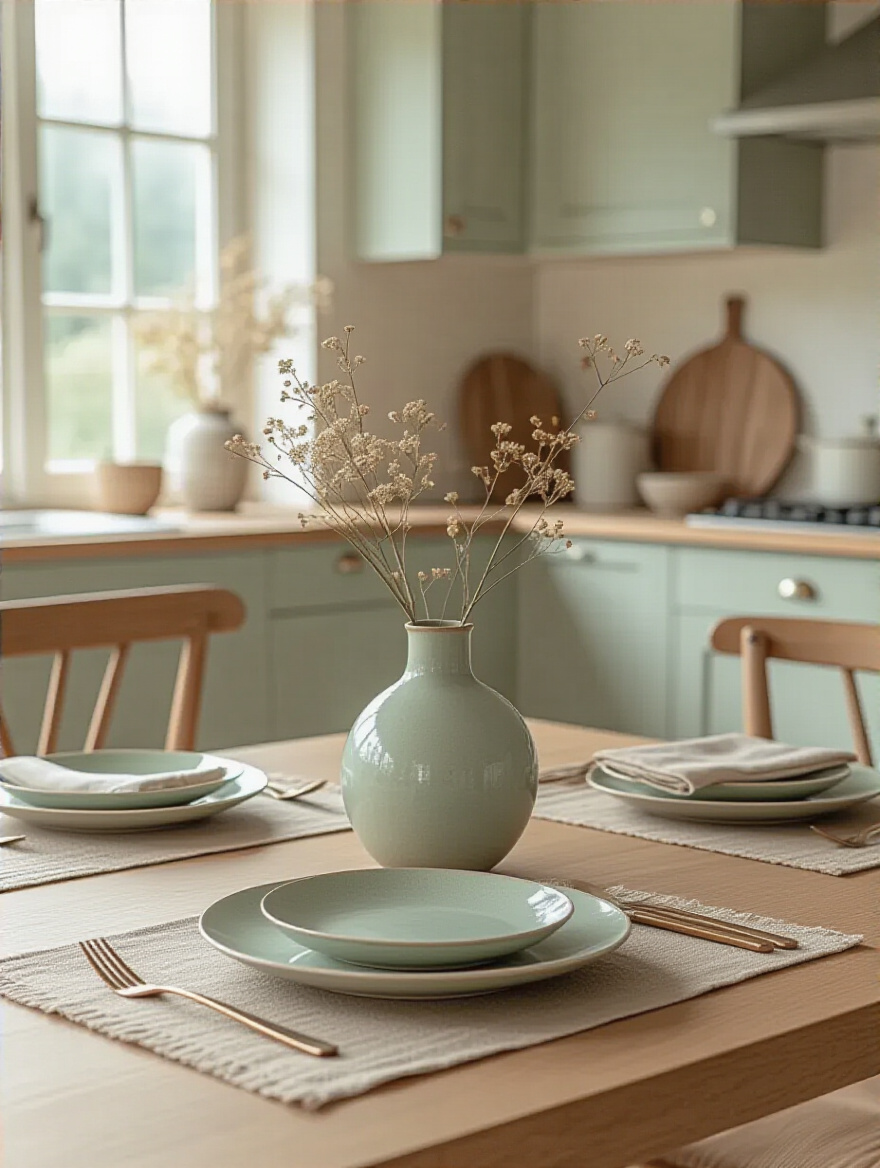
Here’s my 30-second trick for this. Go on Pinterest and create a new board. Search for “kitchen table ideas” and pin the first five images that make you feel happy. Now, look at that board. What do you see? Are they all light woods and white ceramics? That’s your vibe. Are they full of bold colors and quirky patterns? That’s your vibe! You’re just looking for the common thread. That’s your theme, your palette, your guide.
Okay, you’ve got your function, your style, and your vibe. Now for the number one mistake I see people make.
4. Measure for Appropriate Scale and Proportion
Can we please talk about scale? It’s the silent killer of good decor. You can have the most beautiful objects in the world, but if they’re the wrong size for your table, the whole thing will look off. A tiny little bud vase on a giant twelve-person table will look sad and lost. A massive, overflowing floral arrangement on a two-person bistro table will look like it’s about to devour the entire room.
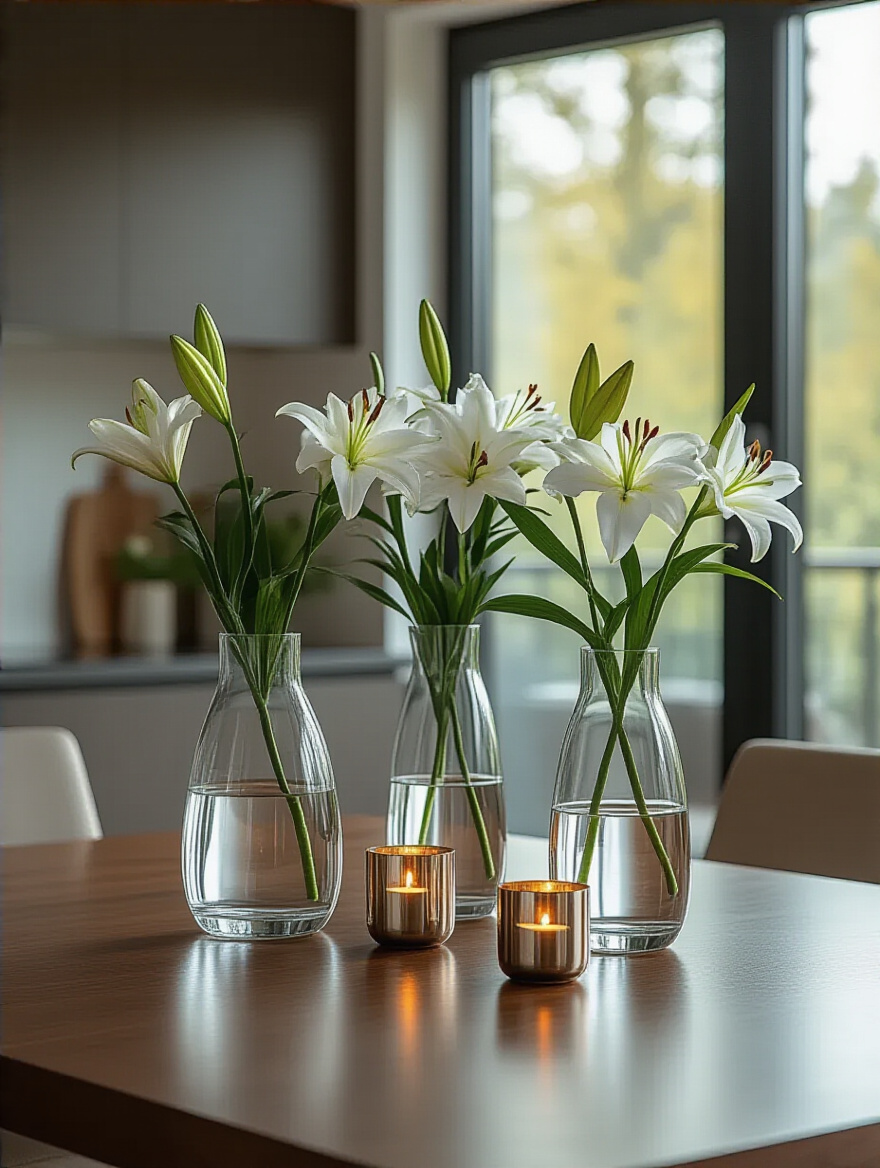
And here’s my biggest pet peeve: ignore those magazine photos with giant arrangements you can’t see through. A centerpiece should never, ever block the view of the person sitting across from you. Conversation is the whole point of sitting at a table together! My rule of thumb: your centerpiece shouldn’t be much taller than 12-14 inches. And for width, a grouping of items should take up no more than the central third of your table’s length. That leaves plenty of room for, you know, plates.
Laying the Stylish Foundation (Part 2)
I know, I know, we’re back to the foundation! But I’m telling you, it’s that important. Getting these last few basics right will ensure your beautifully styled table can actually withstand the beautiful chaos of daily life.
5. Prioritize Durability and Easy Maintenance
This is my special shout-out to anyone with kids, pets, or a clumsy partner. If you can’t wipe it down in ten seconds or less, it has no business being on your kitchen table. This is a high-traffic, high-spill zone! You want materials that are tough, non-porous, and don’t require a 12-page instruction manual to clean. Think glazed ceramics, sealed wood, metal, and thick glass.
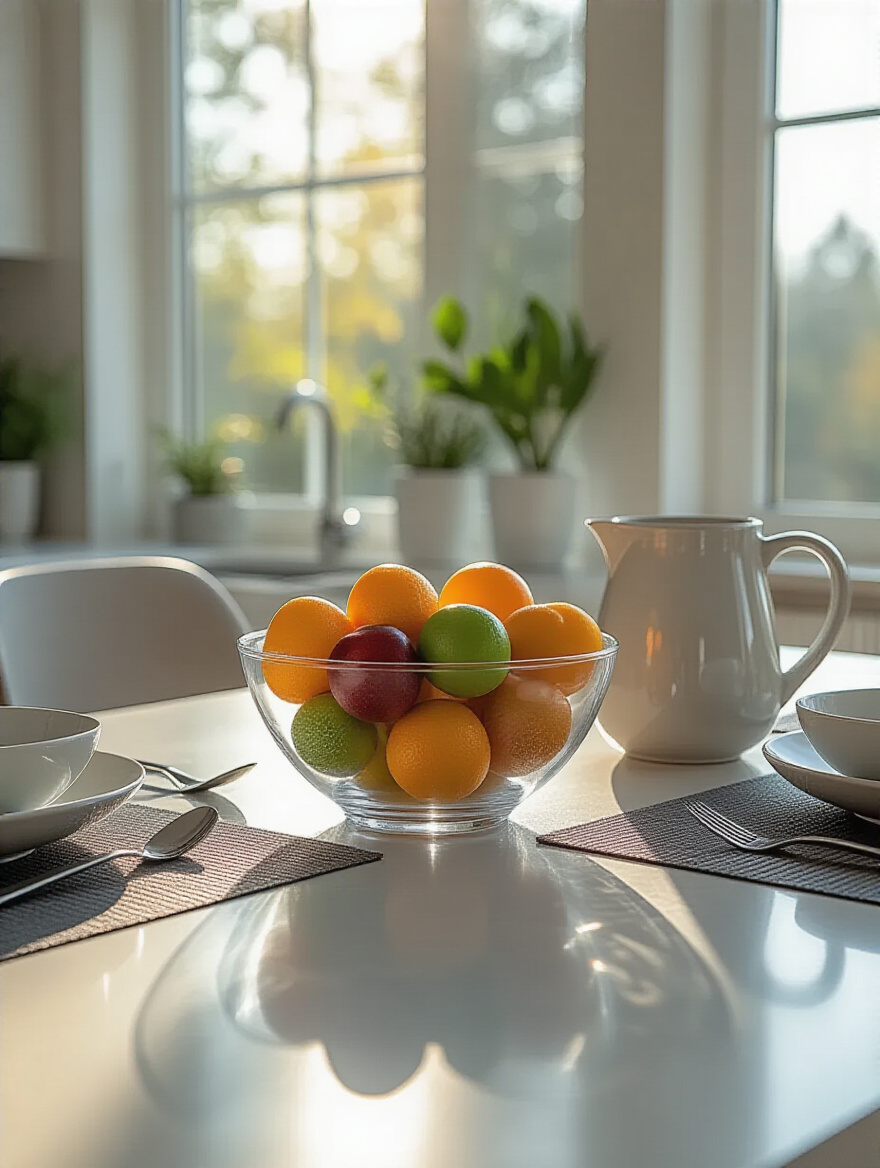
I have a confession: I once found a gorgeous, unsealed, raw wood bowl at a market. I put it on my table and filled it with vibrant red strawberries. It was perfect… for about three hours. Then one single, squished berry left a permanent pink stain that never, ever came out. That bowl quickly became a “character piece.” Lesson learned. Now, I stick to decor that’s as resilient as I need my morning coffee to be.
With the heavy-duty thinking done, it’s time for the fun part: choosing what actually goes on the table!
Curating Core Decorative Elements (Part 1)
This is where your table’s personality starts to shine. We’re moving from theory to practice and picking the key pieces that will become the stars of the show.
6. Select a Captivating Central Focal Point
Every great design needs an anchor—one central thing that draws the eye and makes the whole setup feel intentional. Without a focal point, a table can just look like it’s holding a random collection of stuff. This one key piece is what elevates your table from a surface to a statement. It’s the visual “you are here” sign.
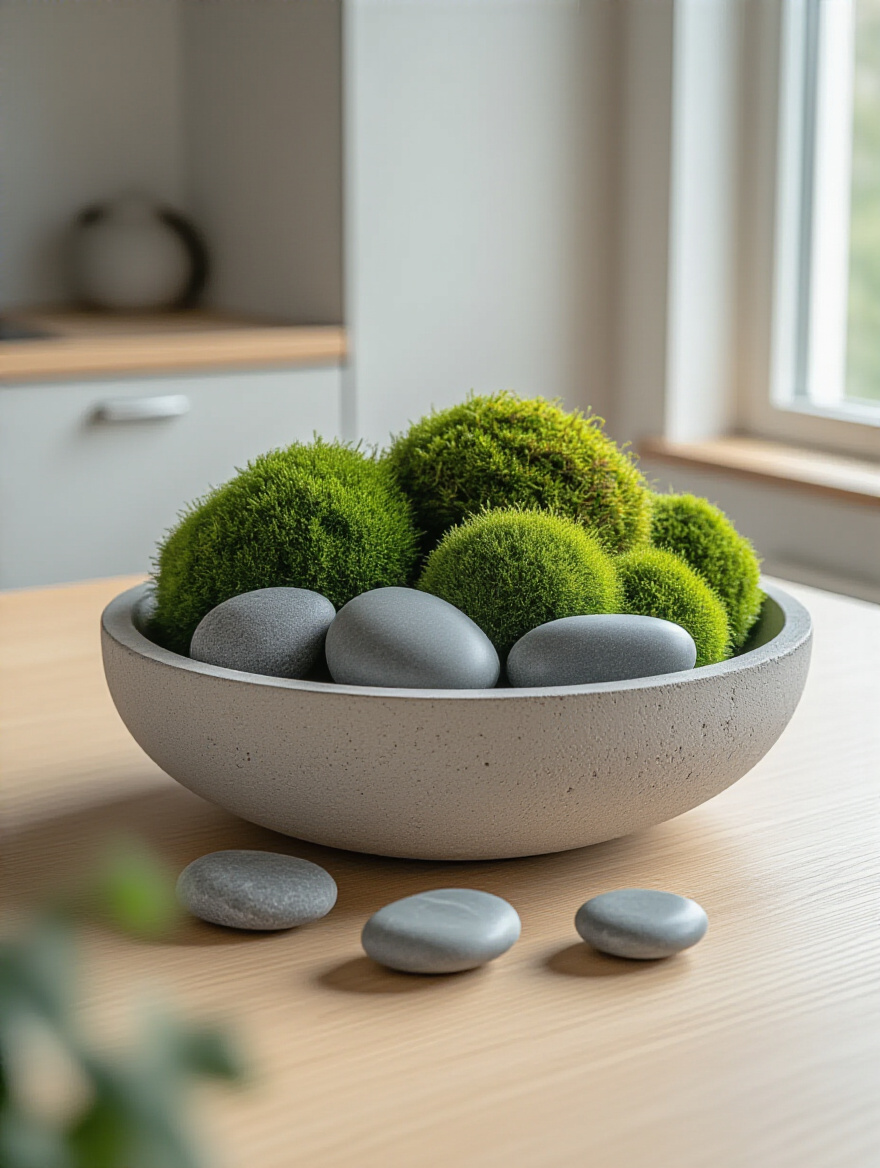
But here’s the secret: it doesn’t have to be a complicated floral arrangement. In fact, it rarely should be for everyday. Your focal point could be a beautiful wooden bowl, a stack of your favorite cookbooks, a sculptural ceramic vase (even empty!), or a cluster of candles on a tray. It just needs to be something with enough visual weight to say, “I live here on purpose.”
Once you have your star, it’s time to find its supporting cast.
7. Master the Rule of Three for Visual Groupings
Designers are obsessed with the “Rule of Three” for a reason: it just works. Our brains are weirdly wired to find groupings of odd numbers—especially three—more appealing and balanced than even numbers. Two things can feel static, and four can feel crowded, but three creates a sense of harmony and visual movement. It’s like a tiny, perfectly balanced family of objects.
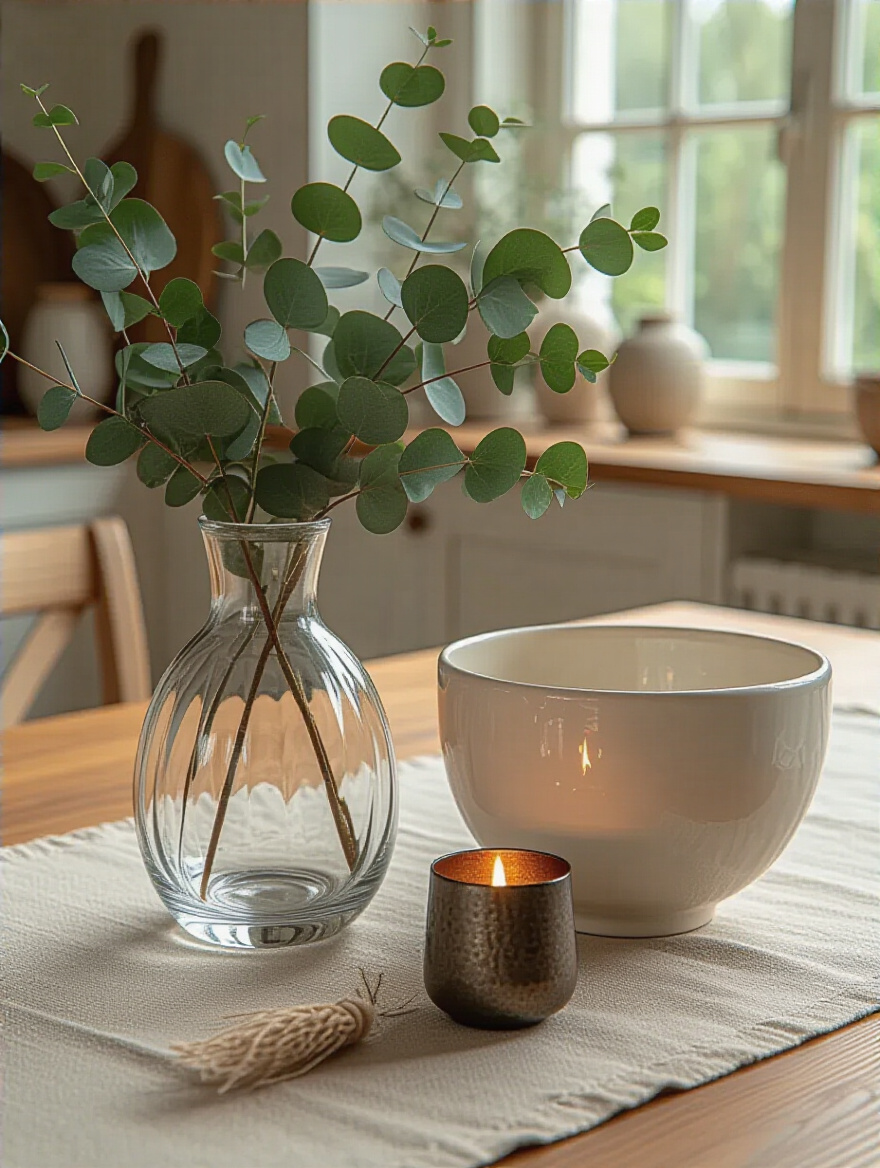
Don’t overthink it. Just find three items that you love and that vary in height and shape. Think: one tall thing (a vase), one medium thing (a candle), and one short, wide thing (a small bowl). Arrange them in a loose triangle, and voilà! You look like a professional stylist.
Now, what if your decor could also… do stuff? It can!
8. Incorporate Practical Items with Aesthetic Appeal
This is my favorite trick because it’s the ultimate combination of beauty and brains. Let your everyday essentials pull double duty as decor! Why hide away your pretty salt and pepper grinders when they can be part of the display? Your fruit bowl isn’t just holding apples; it is the centerpiece, providing a pop of natural color and texture.
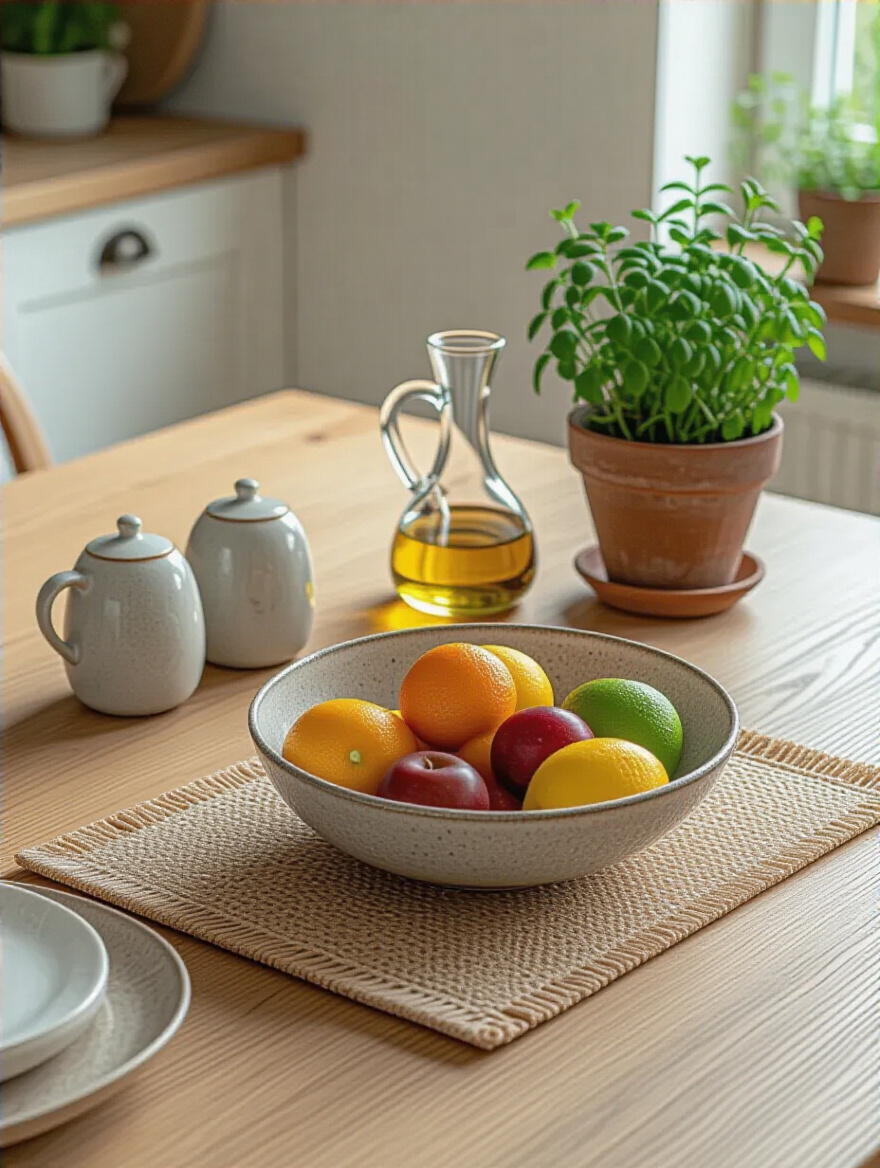
Think about what you regularly use at the table. A beautiful olive oil cruet on a small wooden tray next to a little crock of fresh basil is a perfect example. It’s totally functional for dipping bread, but it also looks like you just stepped out of a villa in Tuscany. Or what about a handsome pitcher that holds water for dinner but sits beautifully with a few green stems during the day? It’s smart, it reduces clutter, and it makes everyday items feel special.
Let’s add a little more spice to the mix.
9. Vary Heights and Textures for Dynamic Interest
Imagine a photo where everyone is the exact same height and wearing the exact same sweater. Boring, right? The same goes for your table. If every object is the same height, size, and material, your display will look flat and one-dimensional. The key to a dynamic, professional-looking arrangement is creating contrast with varying heights and textures.
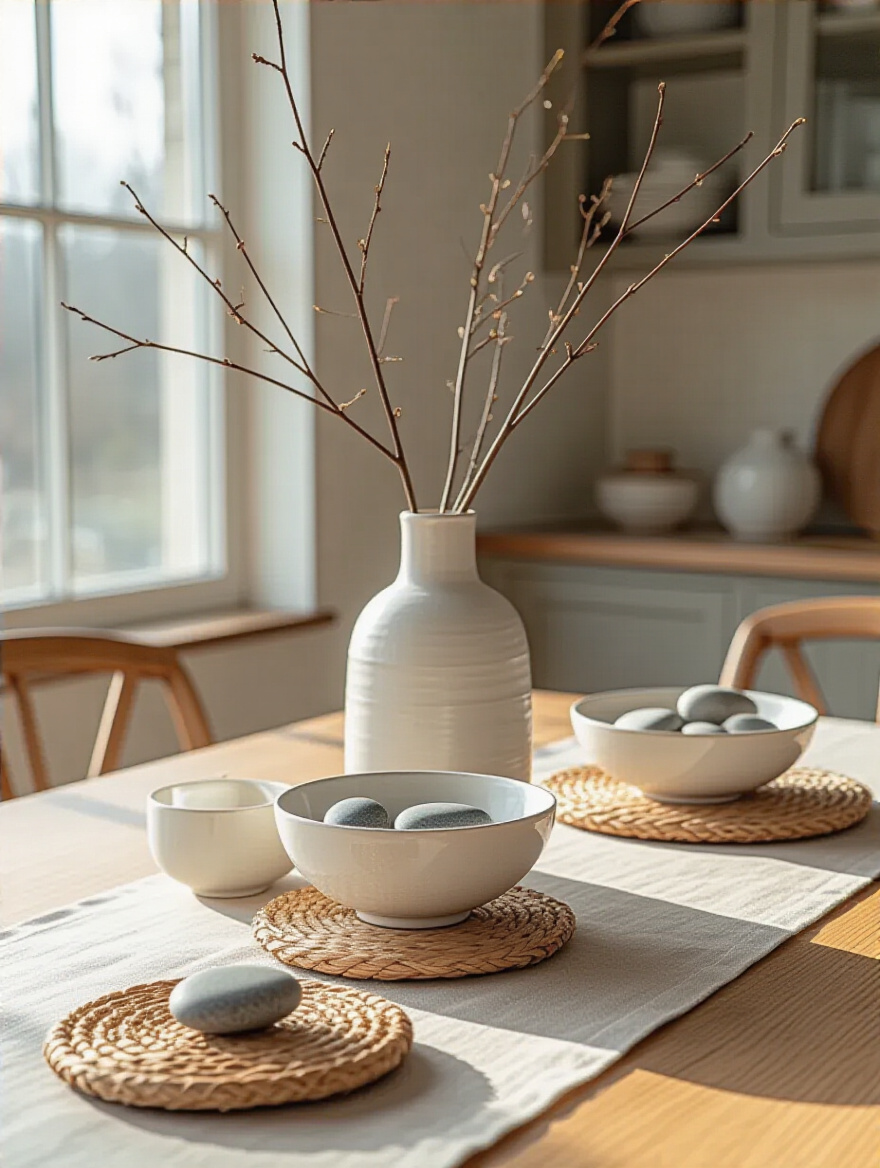
You want a visual rhythm of highs and lows, smooth and rough, shiny and matte. This is what invites your eye to dance across the table instead of just glancing at it. My easy formula: combine something tall and smooth (like a glass vase), something low and with texture (like a woven placemat or a linen runner), and something with a little sparkle (like a brass or silver candle holder). This simple mix creates instant depth and personality.
Curating Core Decorative Elements (Part 2)
Still with me? Good, because we’re still curating! Getting these core pieces right is what makes everything else so much easier down the line. We’ve got one more crucial element to cover in this section.
10. Choose Linens That Complement Without Overpowering
Think of table linens—runners, placemats, tablecloths—as the outfit your table wears. You want them to flatter the table and the things on it, not scream for all the attention. The purpose of linens is to add a layer of softness, color, or texture that provides a beautiful backdrop for everything else, from your centerpiece to your dinner plates.
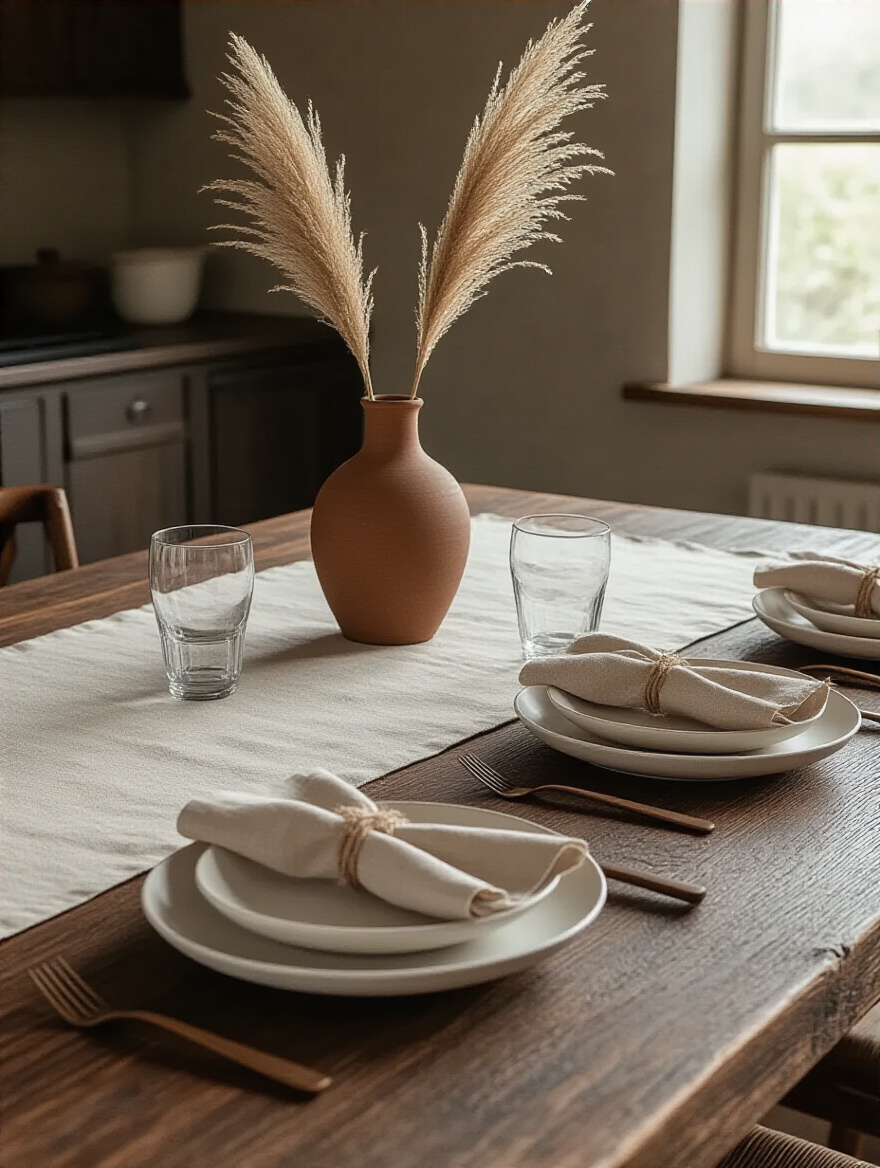
Now, I’m going to say something controversial: please step away from that super loud, trendy, oversized floral pattern you saw online. It’s going to clash with your food, compete with your centerpiece, and you’ll be sick of it in six months. Stick to solids, subtle textures (like linen or a chunky weave), or classic patterns (like a simple stripe or check). These will always look chic and will let your other decorative elements be the star of the show.
You’ve got your pieces, now let’s set the mood.
Enhancing Ambiance and Seasonal Charm (Part 1)
This is where the real magic happens. We’re going beyond just placing objects on a table and starting to create a feeling—an ambiance. This is how you make your table the warm, welcoming heart of your home.
11. Illuminate Your Decor with Thoughtful Lighting
Lighting is everything. It can make a room feel cozy and intimate or bright and sterile. And your table is the perfect place to play with it. A dimmer switch on your overhead light is non-negotiable—it’s the single best investment you can make for creating an instant mood. But don’t stop there.
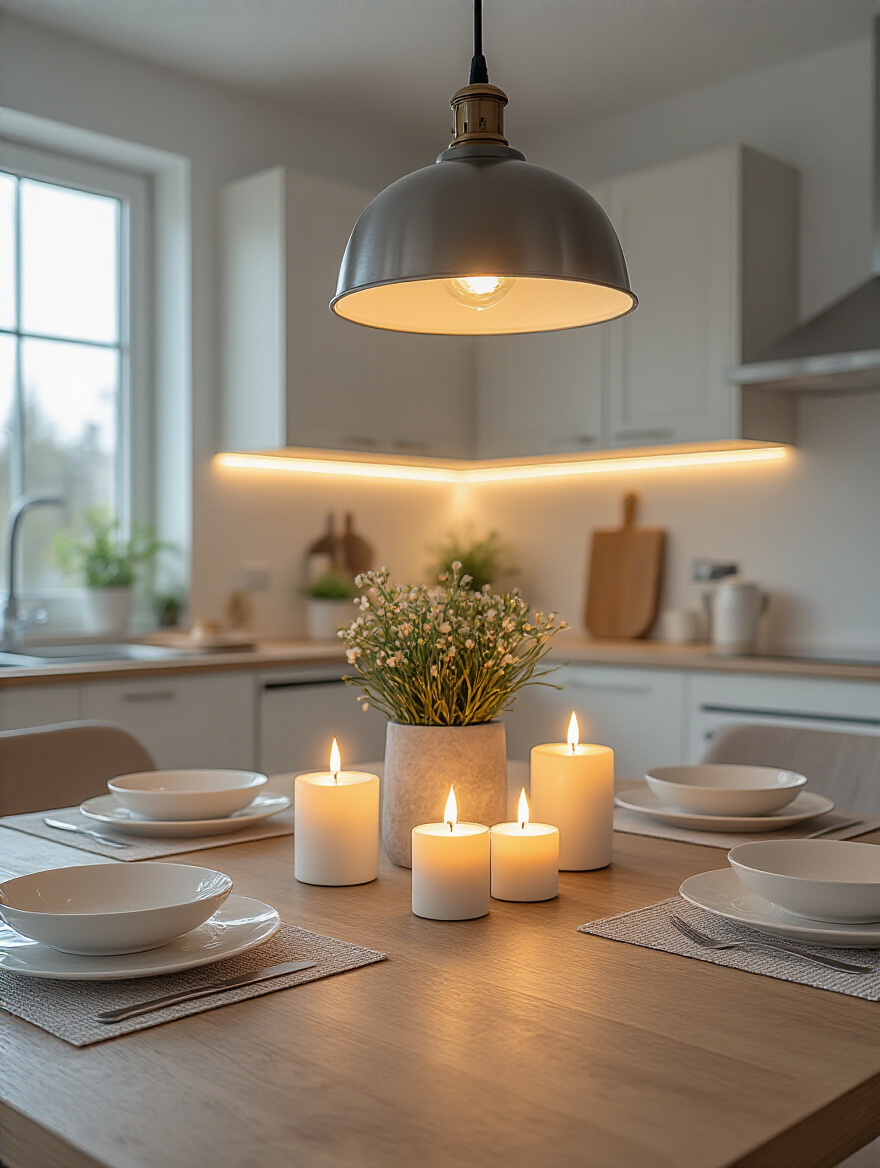
Candles are your secret weapon for making any meal feel special, even Tuesday night tacos. And if you have kids or pets and a real flame feels like a fire hazard waiting to happen, I have two words for you: flameless candles. The new ones are incredibly realistic, often come with a remote, and provide that warm, flickering glow with zero stress. Pop a few in some lanterns or hurricane glasses, and you’ve got instant, worry-free magic.
There’s one more thing that instantly brings a space to life… literally.
12. Integrate Fresh Floral or Greenery Arrangements
Nothing says “I have my life together” quite like something fresh and green on the table. It instantly injects life, color, and natural beauty into your space. But you do not—I repeat, DO NOT—need to be a professional florist or spend a fortune to make a huge impact. Simplicity is your friend here.
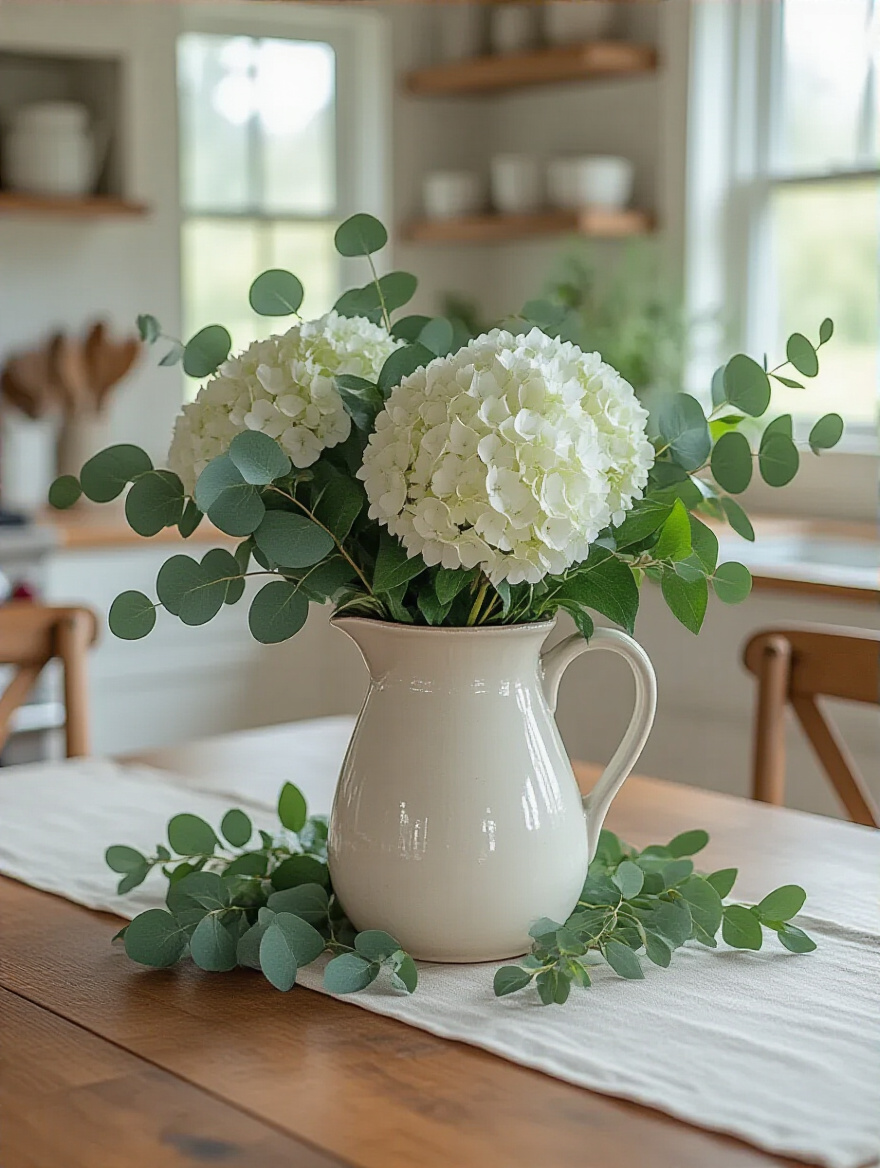
My go-to trick? Head to the grocery store. A bunch of eucalyptus lasts for weeks and smells amazing. A few stems of silver dollar eucalyptus in a simple vase look effortlessly chic. A single, dramatic monstera leaf can last for a month or more. And don’t underestimate the power of a small potted herb like basil or rosemary. It looks great, smells fantastic, and you can pluck from it while you cook.
And now for my absolute favorite topic on the planet…
13. Adapt Your Decor for Seasonal Celebrations
This is it! This is the most fun you can have with your table. Celebrating the seasons isn’t about hauling out boxes of kitschy junk from the attic. It’s about making small, simple swaps that nod to what’s happening outside your window. It keeps your home feeling fresh and relevant and connects you to the rhythm of the year.
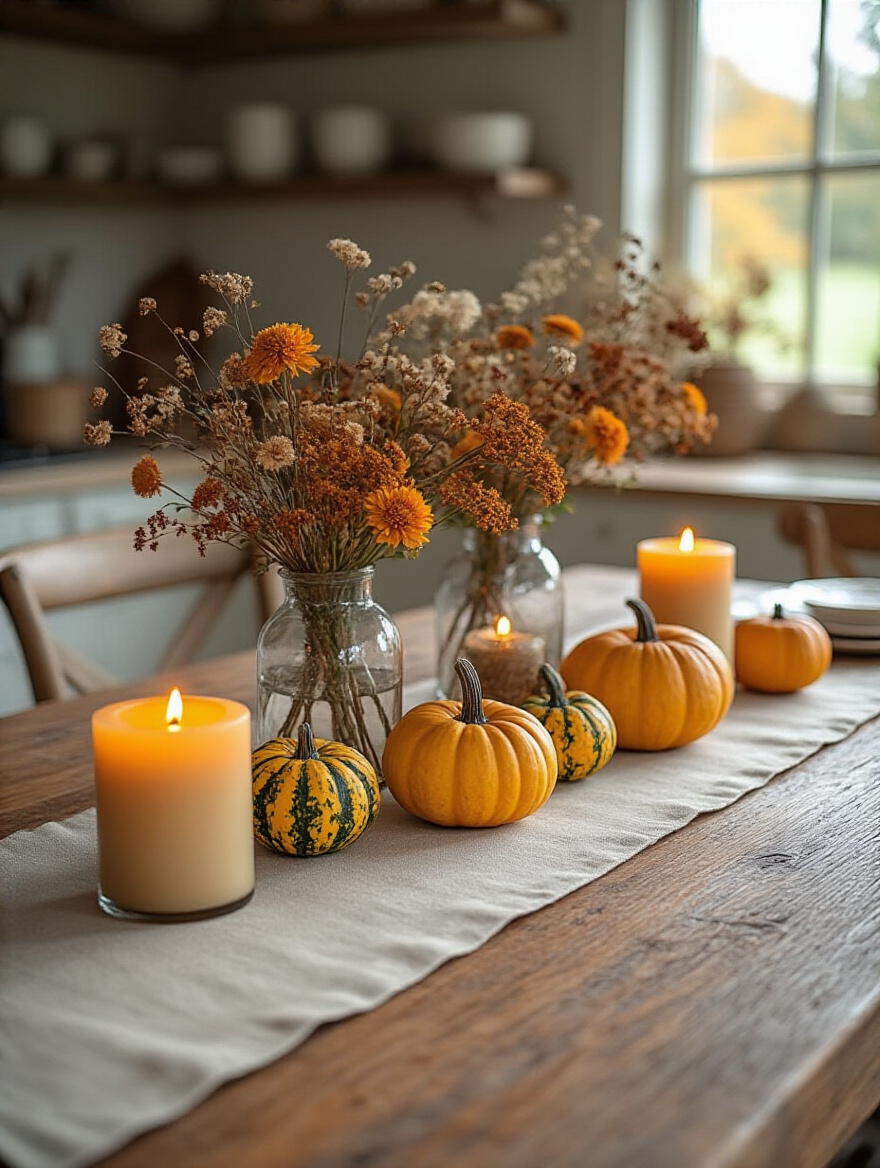
The key is to work with what you already have. Remember that beautiful bowl that serves as your focal point? In the summer, fill it with lemons. For fall, swap them for a handful of mini pumpkins or gourds. In the winter, fill it with pinecones or vintage ornaments. For spring, a small bird’s nest with some faux eggs. It’s that easy! You’re just changing out the “jewelry” of your centerpiece to celebrate the moment.
Finally, let’s make sure this table really feels like yours.
14. Personalize Your Display with Meaningful Accents
Your home should tell your family’s story, and the kitchen table is a perfect chapter. Instead of just buying generic decor, look for opportunities to incorporate items that have personal meaning. These are the things that turn a pretty space into a space with soul. It’s what makes your house a home.
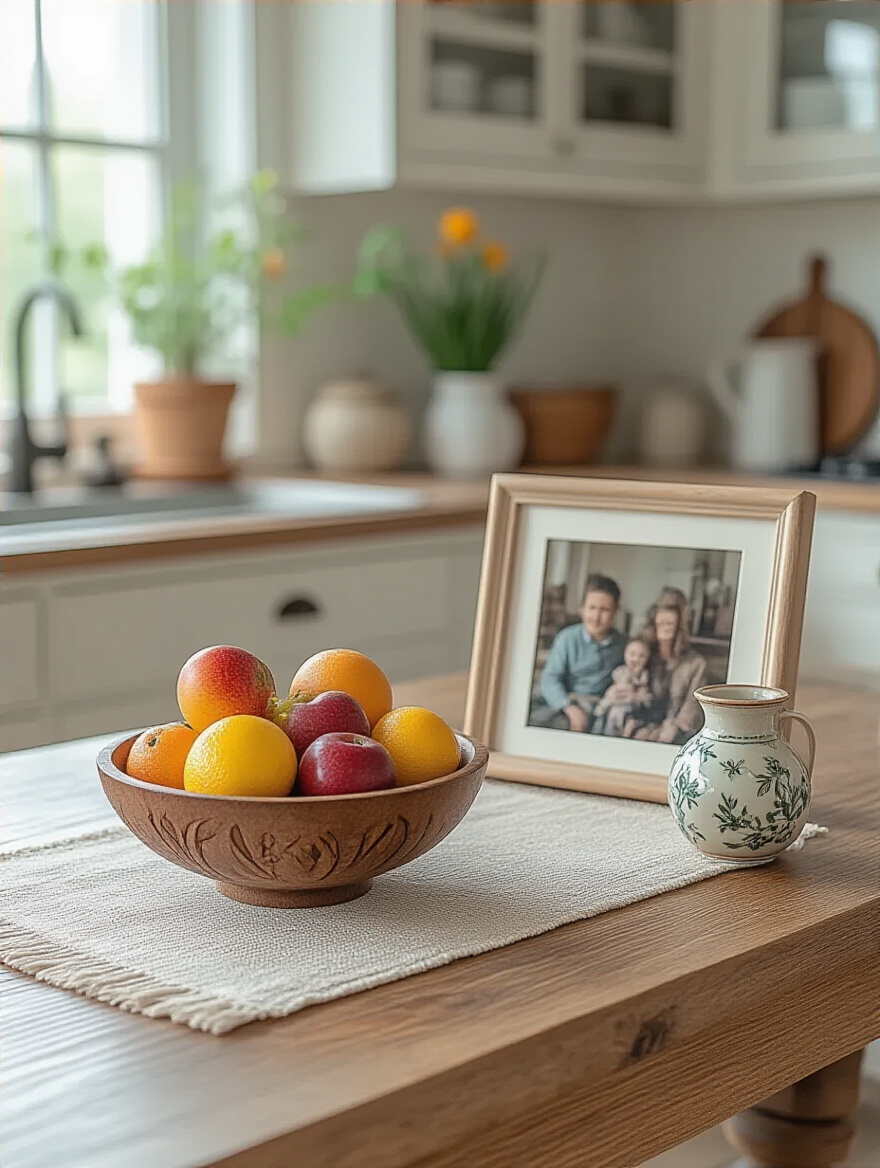
I once worked with a client who had a box of small, beautiful rocks and shells her kids had collected on every family vacation. We put them in a simple, elegant glass bowl and made it the centerpiece of their table. It cost absolutely nothing, but it was priceless. It was a daily reminder of their adventures and a constant conversation starter. Look around your house for those treasures—a small inherited vase, a souvenir from a favorite trip, your child’s first clay creation—and give them a place of honor.
Enhancing Ambiance and Seasonal Charm (Part 2)
Yes, more ambiance! You can never have too much. This last tip for setting the mood is a designer trick that pulls everything together and gives it that finished, professional touch.
15. Layer Elements for Depth and Visual Richness
Think of styling your table like you’re getting dressed. You wouldn’t just wear a shirt; you’d add a jacket, a scarf, maybe some jewelry. Layering creates that same sense of completeness and visual interest. It’s the difference between objects sitting on a table and objects that feel integrated into a tablescape.
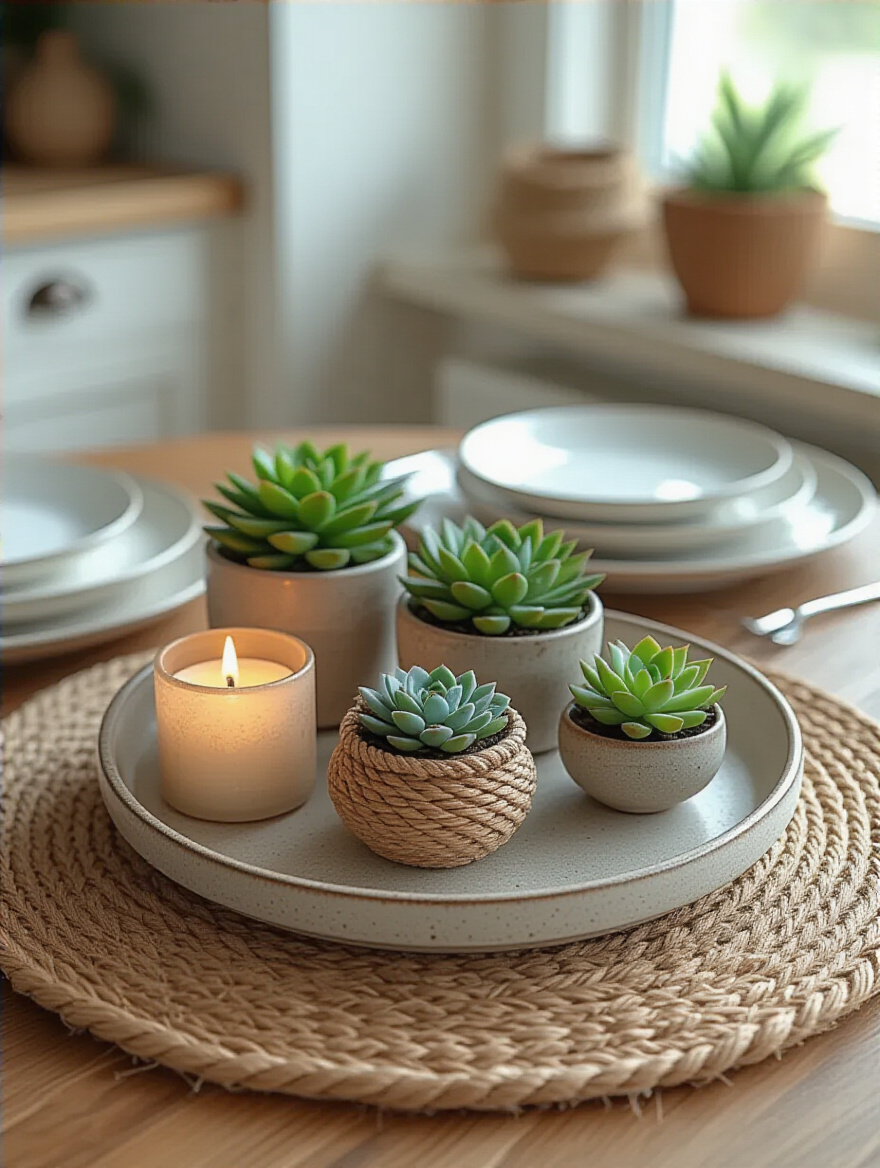
The easiest way to start layering is with a base. A simple runner, a round woven placemat, or even a large tray can act as an anchor for your decor. Place your centerpiece items on top of this layer. This one simple step instantly groups them together and makes them feel like a cohesive, intentional vignette instead of a random assortment of items. It defines the space and adds that crucial layer of texture and depth.
Now, let’s make sure our beautiful, layered, meaningful table still works for real life.
Optimizing for Functionality and Longevity (Part 1)
All the style in the world doesn’t matter if you can’t actually use your table. This is where we make sure our design is practical and sustainable for the long haul.
16. Ensure Practicality by Maintaining Clear Eating Space
This is the number one, most important, non-negotiable rule of kitchen table decorations. If people can’t comfortably eat at the table, you have failed. I call it the “Elbow Room Rule.” Every person sitting at the table needs enough space for their plate, their drink, their silverware, and—you guessed it—their elbows.
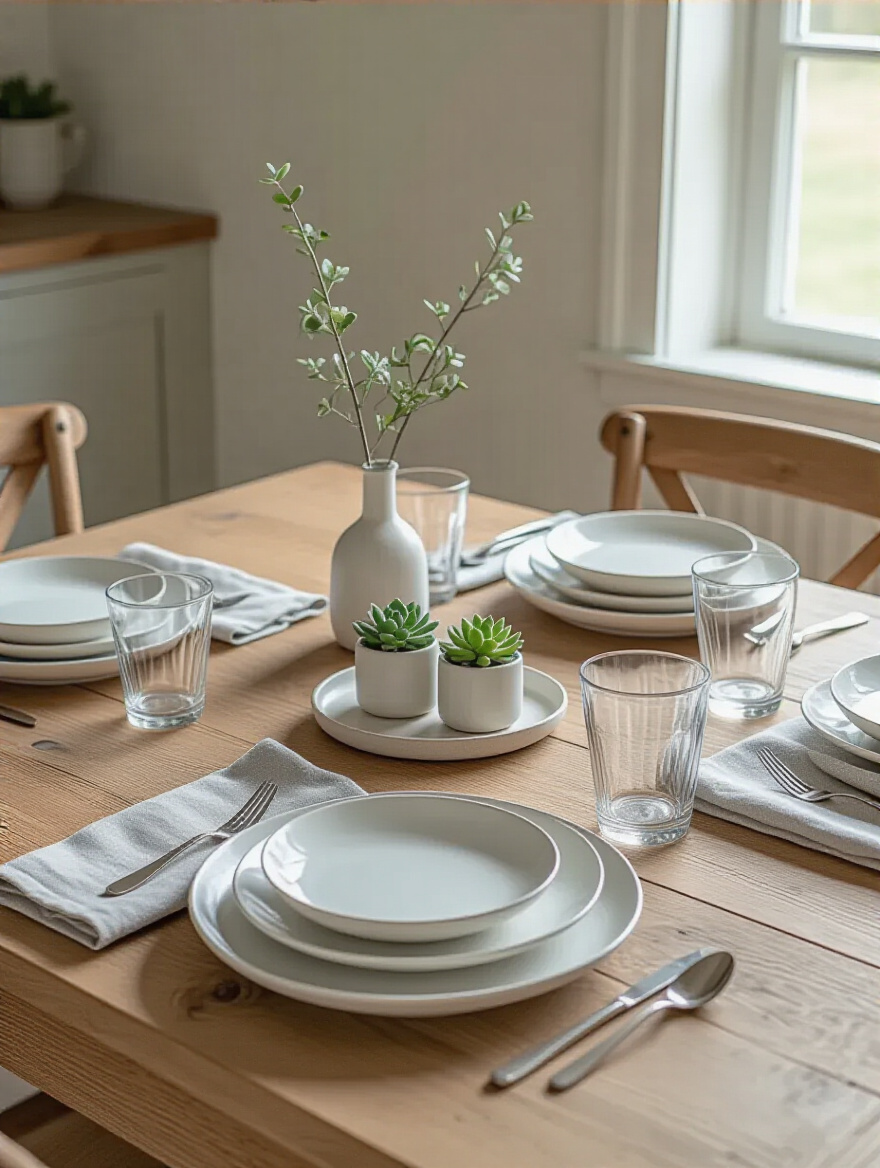
Before you finalize any arrangement, sit in every single chair. Is a candle about to set your sleeve on fire? Is a plant tickling your nose? Do you have to shove the centerpiece halfway to oblivion just to set down a placemat? Your decorative zone should be firmly in the center, leaving a generous, clear border around the entire edge of the table.
And when it’s time to clear the plates…
17. Simplify Daily Maintenance with Easily Movable Pieces
I have a philosophy: the “One-Swoop Cleanup.” If you can’t pick up your entire centerpiece in one swift motion to wipe crumbs and spills, it’s too complicated for everyday life. Consolidating your decor onto a single tray is the easiest way to achieve this.
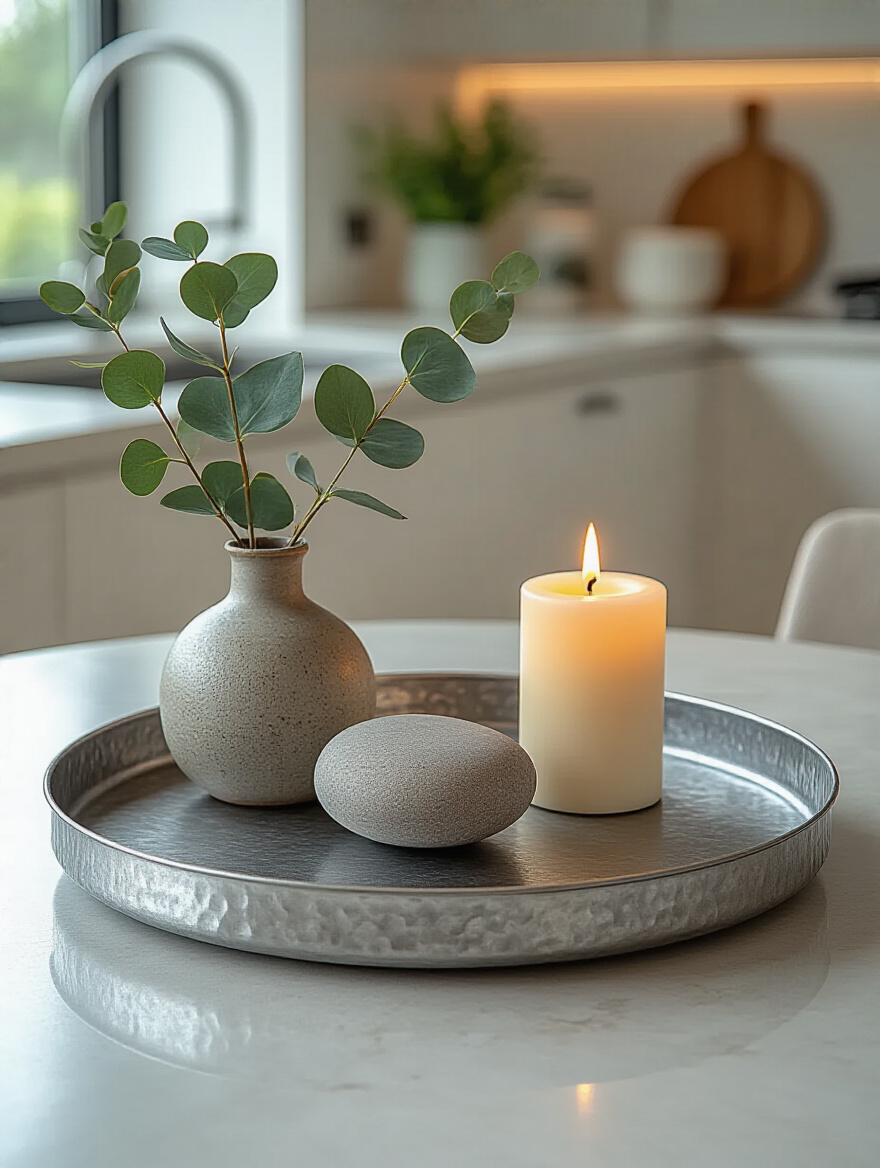
I learned this the hard way, of course. I once created a gorgeous arrangement of a dozen tiny bud vases, each with a single stem. It was stunning for exactly 12 hours. Then came the first toddler-induced milk spill. Having to pick up every single one of those tiny, fragile vases while milk dripped off the edge of the table was a lesson I’ll never forget. Now, I live by the tray. It’s a game-changer for quick cleanups.
Keeping things clean is one thing, but how do you keep them from getting boring?
18. Rotate Decor to Prevent Visual Staleness
Ever notice how after a while, you stop seeing the things that are always there? It’s called decor blindness. The way to fight it is to rotate your items regularly. It keeps your space feeling fresh and helps you appreciate the beautiful things you already own. You don’t need to buy new stuff; you just need to shop your own house!
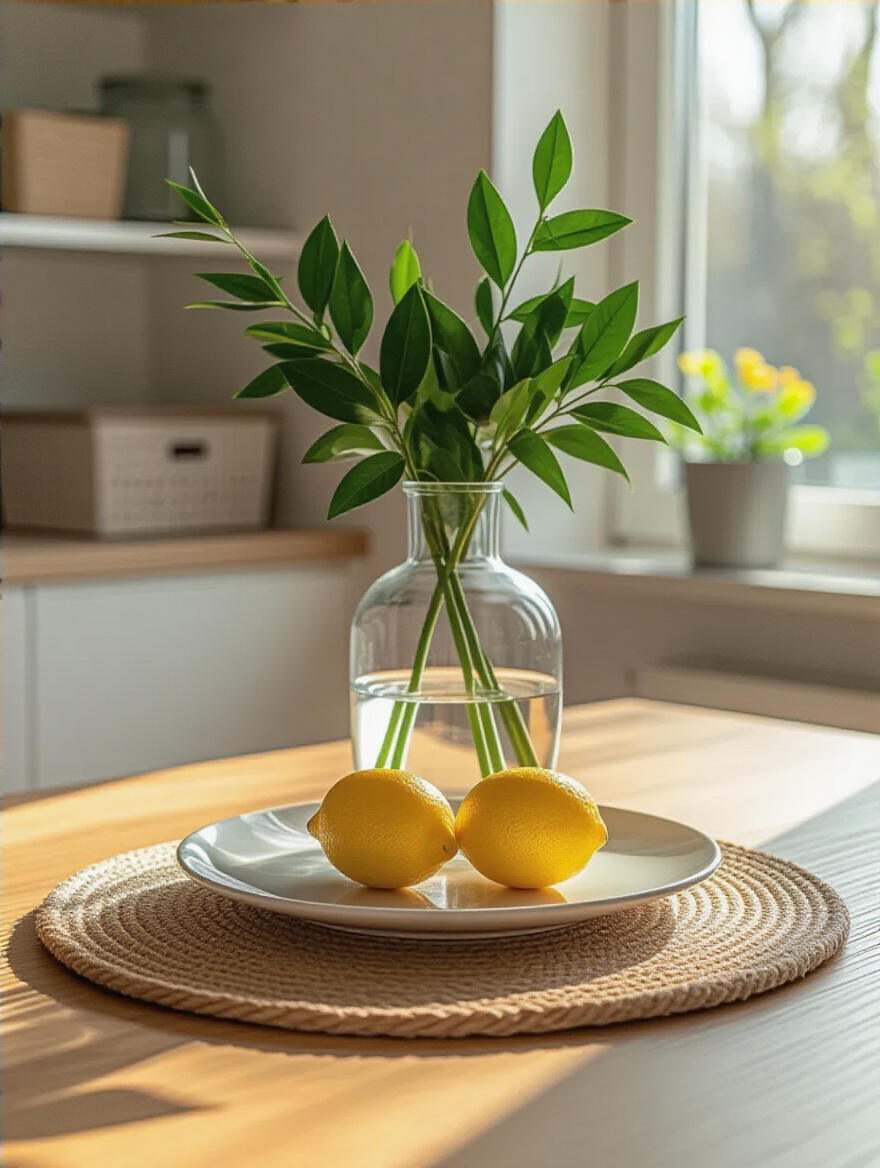
Create a “decor closet,” or even just a single storage bin. That vase that’s been on your kitchen table for six months? Swap it with the stack of books on your entryway console. Take the candle holders from the mantel and move them to the table. This simple act of shuffling things around tricks your brain into seeing them again and makes your whole space feel new without spending a dime.
Finally, let’s tackle the biggest enemy of a beautiful table.
19. Guard Against Common Cluttering Pitfalls
Your kitchen table is a table. It is not a storage unit. I’ll say it again for the people in the back: THE TABLE IS NOT A STORAGE UNIT. Clutter is the sworn enemy of intentional design. All your hard work will be completely invisible under a pile of mail, keys, and school flyers.
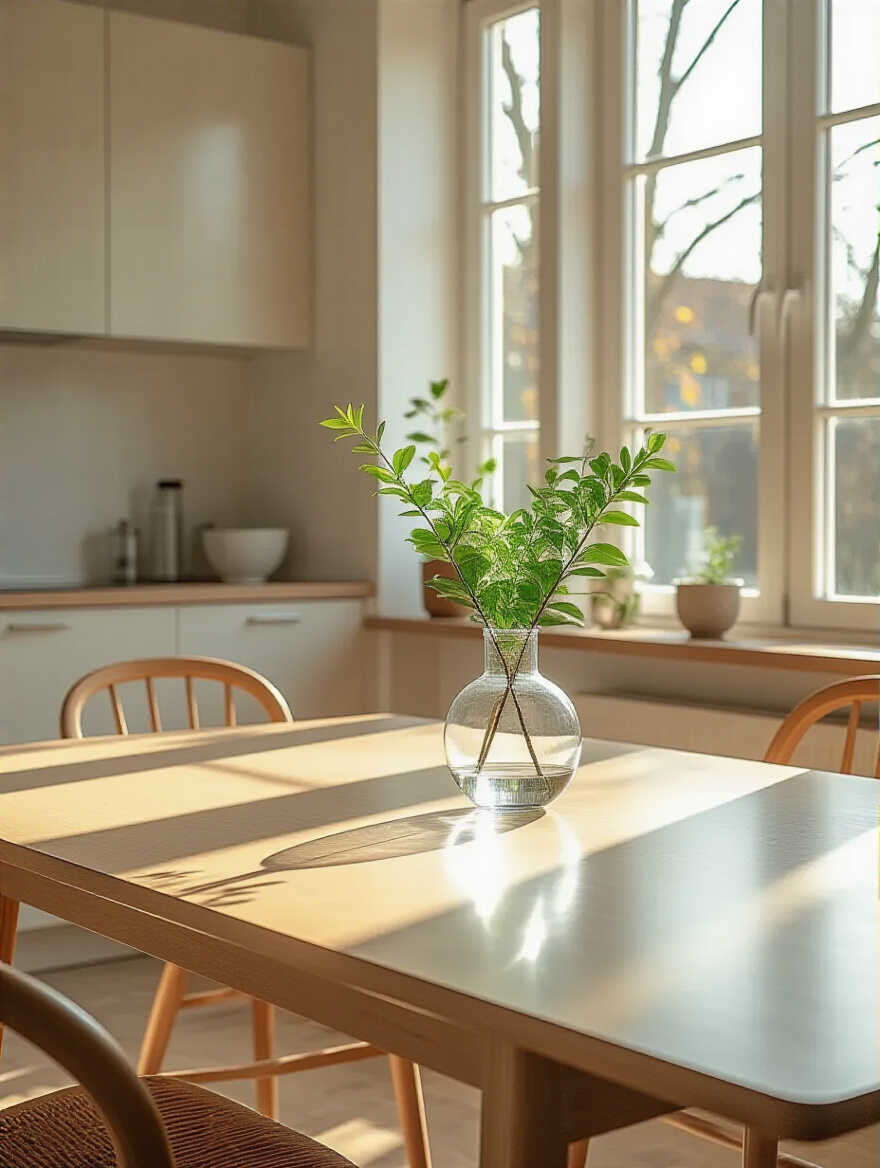
The only way to win this battle is to give that clutter a designated home that is not the table. Set up a simple mail sorter or a “drop zone” basket right by the door where all that stuff can live. Install a charging station on a kitchen counter or a side table. Then, get in the habit of doing a “five-minute clear” every evening. Before you go to bed, take five minutes and return everything on the table to its proper home. Be ruthless.
Optimizing for Functionality and Longevity (Part 2)
We’ve made it to the final tip! This one is about being smart with your resources so you can build a collection of decor you’ll love for years to come.
20. Budget Wisely for Versatile and Lasting Decor Investments
Here’s my best advice on spending your money: go big on the basics and go cheap on the trends. Invest your budget in the high-quality, versatile, timeless pieces that will form the foundation of your decor for years. A beautiful, heavy tray. A classic ceramic pitcher. A set of high-quality linen placemats. These are the workhorses you’ll use forever.
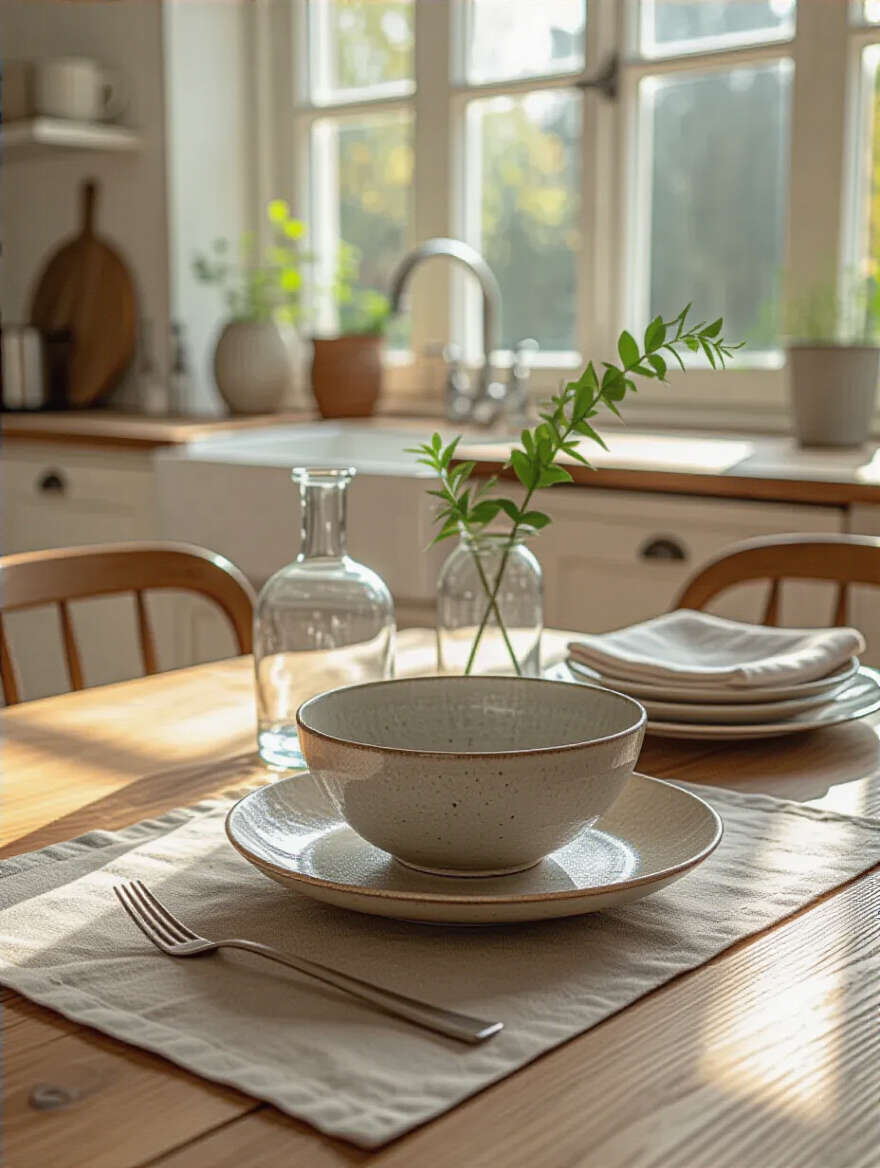
Then, have fun with the cheap and cheerful seasonal accents. Don’t waste $50 on a trendy ceramic ghost for Halloween that you’ll hate next year. Spend that $50 on a gorgeous, timeless wooden bowl, and then put a couple of real, $3 mini pumpkins in it for October. When the season’s over, the pumpkins go, but the beautiful bowl stays. This is how you build a sustainable, stylish collection without breaking the bank.
Time to Make Some Magic!
Whew! We’ve covered a lot, from the nitty-gritty of scale and proportion to the pure joy of seasonal swaps. The biggest takeaway I want you to have is that decorating your kitchen table should be fun. It’s a creative outlet, a way to add a little bit of beauty to your everyday life. It’s not about perfection; it’s about personality. Your personality.
So look at your kitchen table right now. Don’t be discouraged by the clutter. Just clear one little spot in the middle. Find one thing in your house that makes you smile—a vase, a candle, a piece of your kid’s art—and place it right there. See? You’ve already started. Now go have fun with it!
